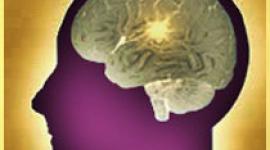New Research on Biological Psychiatry and Psychopharmacology
Report on American Psychiatric Association 2004 Annual Meeting
At a scientific meeting such as the annual meeting of the American Psychiatric Association (APA), often some of the most interesting and exciting things presented are found in poster sessions. For the uninitiated, these are sessions in which there are aisles of bulletin boards containing posters describing research projects, and investigators stand in front of them, answering questions and explaining their work, if asked. While the sessions can be quite overwhelming with the sheer amount of data and projects available, they can also be considerably more leisurely and relaxing; viewers can walk down the aisles and look at the research at their own pace, skipping over things they may not be particularly interested in, and lingering over ones that they are, even talking to the investigator standing right there. The downside is that many, if not all, of the studies are not major research projects with huge numbers of subjects or data, but are usually preliminary studies that may lead to larger pieces of work in the future, perhaps ending up as journal articles. Thus, one will not see the best science in a poster session, but one may see future research directions for great science in our field.
 At the poster session devoted to biological psychiatry and psychopharmacology at the APA 2004 Annual Meeting, there were a number of things to stop and linger over. One study[1] showed increased synaptic efficiency and plasticity in the hippocampus of rats exposed to lithium (Lithium Carbonate), providing further evidence that therapies for mood disorders in general often have similar effects in this area of the brain. Another study[2] took a different spin on the relationship between diabetes and psychotropic medication by looking at the effect on bipolar patients of different classes of medications on hemoglobin A1C levels, considered to be a sensitive indicator of hyperglycemia. This work showed that A1C levels went significantly down with lithium, anticonvulsant mood stabilizers, and antidepressants, but up slightly with antipsychotics.
At the poster session devoted to biological psychiatry and psychopharmacology at the APA 2004 Annual Meeting, there were a number of things to stop and linger over. One study[1] showed increased synaptic efficiency and plasticity in the hippocampus of rats exposed to lithium (Lithium Carbonate), providing further evidence that therapies for mood disorders in general often have similar effects in this area of the brain. Another study[2] took a different spin on the relationship between diabetes and psychotropic medication by looking at the effect on bipolar patients of different classes of medications on hemoglobin A1C levels, considered to be a sensitive indicator of hyperglycemia. This work showed that A1C levels went significantly down with lithium, anticonvulsant mood stabilizers, and antidepressants, but up slightly with antipsychotics.
Not surprisingly, there were many posters in this session looking at genetic markers. Some of these demonstrated genotypes that may be protective of psychiatric disorders, other showed genotypes that may be predictors of medication response or nonresponse, and still others looked at the genetics that may predict whether patients will get certain side effects from their medication. While some of the studies may be more positive with more robust data than others, it is truly remarkable to see the depth and breadth of psychogenetics. This may be the place where a poster session truly predicts where our future lies.
The pharmaceutical industry is quite present at the annual meeting, and the poster sessions are no exception. There are multiple posters that deal directly with marketing agendas of particular agents. For example, one poster showed that ziprasidone (Geodon) does not prolong QTC intervals significantly,[3] another dealt with making rashes from lamotrigine (Lamictal) particularly unlikely,[4] another compared aripiprazole (Abilify) favorably with olanzapine (Zyprexa) in the incidence of metabolic syndrome,[5] and another showed that extended-release divalproex sodium (depakote) works well.[6] Industry support on these kinds of studies is reasonably well documented, and they can be interesting, but it is not unusual to see a poster that is telling you what sales reps have been telling you for months.
One intriguing poster made an argument that has become particularly unpopular in the current literature. A study from the University of Pennsylvania[7] showed that antidepressant monotherapy in the treatment of bipolar II major depression may be safe and effective with a very low manic switch rate. This study was funded by a grant from the National Institute of Mental Health and contradicts much current literature. Another intriguing poster[8] showed that psychiatric inpatients who had a history of using cannabis required longer admissions, more intensive treatment in the hospital, and higher doses of medication.
Not surprisingly, there were multiple posters on polypharmacy and, in particular, on innovative combinations of psychotropic agents. Among the more intriguing were one on the combined use of lamotrigine and lithium in bipolar disorder[9] and the combined use of donepezil and divalproex in Alzheimer's disease.[10] Other posters looked at somewhat better-known combinations, such as using mirtazapine with other relatively new antidepressants,[11] and showed that venlafaxine may be the best medication to combine with mirtazapine. Some preliminary data were shown[12] about adjunctive modafinil with selective serotonin reuptake inhibitors. No discussion of drug combinations would be complete without looking at the issue of drug-to-drug interactions, and one poster[13] showed data about how remarkably likely it was for a clinically significant drug interaction to take place.
Arguably, the most interesting posters are about those agents or applications that are new. These can be a novel way to use a well-known agent, such as a study using mirtazapine intravenously in medically ill patients.[14] They can also be a completely new use for a well-known drug such as the use of mifepristone, known as a controversial oral abortion medication (RU-486), as a successful and extremely well-tolerated treatment for psychotic major depression.[15] There can also be intriguing work about relatively new medications and new ways to use them. A relatively new anticonvulsant, levetiracetam, was shown in a number of posters to have potential efficacy for aggressive disorders,[16] bipolar disorder[17,18] and hypomania.[19] There were many posters that showed new uses for well-established psychotropics, such as the use of anticonvulsants including lamotrigine[20] and divalproex[21] as adjunctive treatment for schizophrenia. There were also posters about the use of paroxetine in the treatment of fibromyalgia[22] and irritable bowel syndrome.[23]
Finally, there are the brand-new agents, the ones that are not available for general clinical use but show some promise. Some of these are imminent for launch into the marketplace, like pregabalin for anxiety disorders.[24,25] Others are so new that they do not have names yet, just a number assigned to investigational drugs. One intriguing example of this is DOV 216303, which is a triple reuptake inhibitor -- it blocks the reuptake of serotonin, norepinephrine, and dopamine. The poster presented[26] described a study where the medication was given only to healthy volunteers, but it was found to be quite safe with a very low incidence of adverse events. Given the new interest in medications blocking the reuptake of multiple neurotransmitters, it will be interesting to see what the addition of dopamine reuptake blockade will do for efficacy.
This description of a poster session is by no means intended to be a comprehensive review of all of the information and ideas presented. There were many more posters at the session that went unmentioned. It will hopefully, however, describe the themes and the highlights and give the reader a sense both of what the room was like and where the research community is looking.
next:
References
- Shim S, Russell R. Exposure to lithium enhances synaptic plasticity in the hippocampus. Program and abstracts of the American Psychiatric Association 2004 Annual Meeting; May 1-6, 2004; New York, NY. Abstract NR316.
- Castilla-Puentes R, Coleman B, Russo L, et al. Effects of psychotropics on HbA1c in a cohort of bipolar patients. Program and abstracts of the American Psychiatric Association 2004 Annual Meeting; May 1-6, 2004; New York, NY. Abstract NR317.
- Haverkamp W, Naber D, Maier W, et al. QTc interval during ziprasidone treatment of patients with schizophrenia. Program and abstracts of the American Psychiatric Association 2004 Annual Meeting; May 1-6, 2004; New York, NY. Abstract NR335.
- Wang PW, Chandler RA, Alarcon AM, et al. Low incidence of lamotrigine treatment-emergent rash with dermatology precautions. Program and abstracts of the American Psychiatric Association 2004 Annual Meeting; May 1-6, 2004; New York, NY. Abstract NR348.
- Casey D, L'Italien GJ, Cislo P. Incidence of metabolic syndrome in olanzapine and aripiprazole patients. Program and abstracts of the American Psychiatric Association 2004 Annual Meeting; May 1-6, 2004; New York, NY. Abstract NR338.
- Jackson RS, Venkataraman S, Owens M, et al. Tolerability and efficacy of divalproex extended release in psychiatric patients. Program and abstracts of the American Psychiatric Association 2004 Annual Meeting; May 1-6, 2004; New York, NY. Abstract NR346.
- Amsterdam J, Shults J. Antidepressant monotherapy of bipolar patients type II major depressive episode. Program and abstracts of the American Psychiatric Association 2004 Annual Meeting; May 1-6, 2004; New York, NY. Abstract NR336.
- Issac M, Issac MT. Metabolic and Clinical Implications of cannabis use in psychiatric intensive care. Program and abstracts of the American Psychiatric Association 2004 Annual Meeting; May 1-6, 2004; New York, NY. Abstract NR341.
- Goodwin FK, Bowden CL, Calabrese JR, et al. Concomitant use of lamotrigine and lithium in bipolar I disorder. Program and abstracts of the American Psychiatric Association 2004 Annual Meeting; May 1-6, 2004; New York, NY. Abstract NR340.
- Aupperle PM, Sohynle S, Coleman J, et al. Divalproex sodium extended release augmentation of donepezil. Program and abstracts of the American Psychiatric Association 2004 Annual Meeting; May 1-6, 2004; New York, NY. Abstract NR345.
- Blier P, Ward H, Jacobs W, et al. Combining two antidepressants from treatment start: a preliminary analysis. Program and abstracts of the American Psychiatric Association 2004 Annual Meeting; May 1-6, 2004; New York, NY. Abstract NR357.
- Schwartz TL, Cole K, Hopkins GM, et al. Adjunct modafinil reduces SSRI-induced sedation in patients with MDD. Program and abstracts of the American Psychiatric Association 2004 Annual Meeting; May 1-6, 2004; New York, NY. Abstract NR367.
- Preskorn S, Shah R, Silkey S, et al. The potential for clinically significant drug-drug interactions in patients. Program and abstracts of the American Psychiatric Association 2004 Annual Meeting; May 1-6, 2004; New York, NY. Abstract NR368.
- Morlet A, Tamiriz G. First report of intravenous mirtazapine in medically ill patients with depression in Mexico. Program and abstracts of the American Psychiatric Association 2004 Annual Meeting; May 1-6, 2004; New York, NY. Abstract NR344.
- Schatzberg, AF, Solvson HB, Keller J, et al. Mifepristone in psychotic major depression. Program and abstracts of the American Psychiatric Association 2004 Annual Meeting; May 1-6, 2004; New York, NY. Abstract NR397.
- Jones J, Deutchman D, Chalekian JS, et al. Levetiracetam: efficacy, tolerability, and safety in aggressive disorders in 100 patients. Program and abstracts of the American Psychiatric Association 2004 Annual Meeting; May 1-6, 2004; New York, NY. Abstract NR372.
- Deutchman DA, Deutchman D, Chalekian JS. Levetiracetam: efficacy, tolerability and safety in bipolar disorder in 200 patients. Program and abstracts of the American Psychiatric Association 2004 Annual Meeting; May 1-6, 2004; New York, NY. Abstract NR373.
- Ahmadi A, Ekhtiari S. Levetiracetam as an add-on in adults and children with bipolar disorder. Program and abstracts of the American Psychiatric Association 2004 Annual Meeting; May 1-6, 2004; New York, NY. Abstract NR404.
- Goldberg JF, Burdick KE. Preliminary experience with levetiracetam in bipolar hypomania. Program and abstracts of the American Psychiatric Association 2004 Annual Meeting; May 1-6, 2004; New York, NY. Abstract NR408.
- Vass A, Kremer I, Gurelik I, et al. Pilot-controlled trial of lamotrigine adjuvant treatment in schizophrenia. Program and abstracts of the American Psychiatric Association 2004 Annual Meeting; May 1-6, 2004; New York, NY. Abstract NR395.
- Citrome LL, Jaffe AB, Levine J, et al. Mood stabilizer use in schizophrenia 1994-2002. Program and abstracts of the American Psychiatric Association 2004 Annual Meeting; May 1-6, 2004; New York, NY. Abstract NR350.
- Purcell C, Patkar A, Masand P, et al. Predictors of response to placebo-controlled, double-blind trial of paroxetine controlled release in fibromyalgia. Program and abstracts of the American Psychiatric Association 2004 Annual Meeting; May 1-6, 2004; New York, NY. Abstract NR361.
- Masand P, Patkar A, Dube E, et al. Paroxetine controlled-release treatment of irritable bowel syndrome. Program and abstracts of the American Psychiatric Association 2004 Annual Meeting; May 1-6, 2004; New York, NY. Abstract NR370.
- Khan A, Simon NM, Tobias KJ, et al. Pregabalin in GAD: does it also improve core depressive symptoms? Program and abstracts of the American Psychiatric Association 2004 Annual Meeting; May 1-6, 2004; New York, NY. Abstract NR364.
- Bockbrader HN, Wesche D. Pharmacokinetic profile of pregabalin: results of a series of studies. Program and abstracts of the American Psychiatric Association 2004 Annual Meeting; May 1-6, 2004; New York, NY. Abstract NR378.
- Lippa A, Beer B, Stark J, et al. DOV 216303, a triple reuptake inhibitor: first human studies. Program and abstracts of the American Psychiatric Association 2004 Annual Meeting; May 1-6, 2004; New York, NY. Abstract NR393
next: In a Major and Minor Mood Beethoven's Manic Depression
~ bipolar disorder library
~ all bipolar disorder articles
APA Reference
Staff, H.
(2007, February 2). New Research on Biological Psychiatry and Psychopharmacology, HealthyPlace. Retrieved
on 2025, December 28 from https://www.healthyplace.com/bipolar-disorder/articles/new-research-on-biological-psychiatry-and-psychopharmacology



